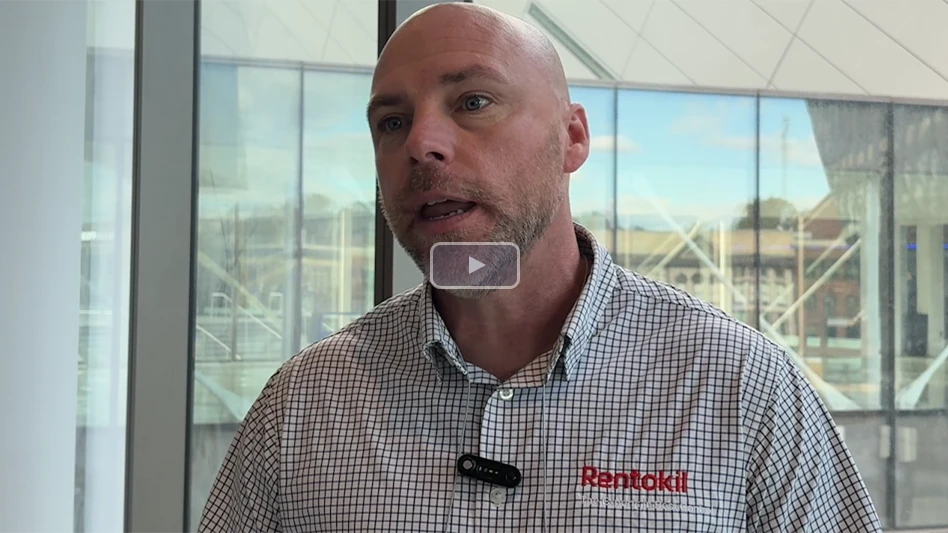
Would the thought of servicing upward of 15,000 snap traps each week send shivers through your technicians? It might for some but it doesn’t faze Josh Erdman and his team at Erdye’s Pest Control, Green Bay, Wis. Erdye’s has carved out a strong position in its multi-state service area, which includes Wisconsin, the Upper Peninsula of Michigan and eastern Minnesota, taking care of residential customers’ mice problems.
“Our goal is not to set up a monthly service schedule for mice with a client, it is to solve their problem the first time,” says Erdman, who spent 20 years in the property management and construction industries before dedicating his time and resources to pest management in 2012.
Erdman says the biggest flaw with most mouse management programs is they don’t address the root of the problem. “Not sealing a house properly will ultimately lead to other control efforts failing,” says Erdman, who estimates 60 percent of his business is dedicated to mouse control.
Following thorough property inspection protocols, Erdye’s technicians identify access points and seal openings using construction grade materials. They also set good old-fashioned snap traps — in abundance — to knock down any existing mice population. Upsell opportunities are available for remediation work — removing damaged insulation in attics, basements, crawlspaces and wall voids, and sanitizing areas infested by mice.
“My construction background provides me with knowledge of where a home’s structural weak points are located that allow mice access,” says Erdman, who conducts hands-on training with his technicians on construction practices. “We train them on what to look for and act on it.”
Another area Erdye’s differs from the competition is that it isn’t afraid to charge the customer what it takes to fix their mouse problem over the long haul and not just in the short term. The company offers a set price for the initial trapping program set up, but fees vary for exclusion and cleanout work depending on the specific needs and unique aspects of the property.

“All rodent situations are different and need to be priced accordingly,” says Erdman. “We have learned through trial and error, but at the end of the day our customers pay us to fix the problem.”
Erdye’s extensive use of snap traps — each home they service averages 35 to 60 traps depending on the size — is another trademark.
“We do not use sticky traps and we do not use bait inside because we do not want to have rodents die in wall voids and other inaccessible areas and cause additional problems and expense for customers,” says Erdman, who does deploy bait stations on the exterior to knock down the population.
Because Erdye’s technicians need access to a home’s interior to check traps, their route scheduling may not be viewed as efficient, but that is fine with Erdman. “I wouldn’t change it because we will spend the extra time and fuel it takes to get there to take care of clients to our standards,” he said.
The company’s exclusion-first approach — complemented by the investment in traps and exterior bait stations — also is dictated by the Upper Midwest’s harsh winters and its impact on homes. “Homes can change structurally with the seasons and create new opportunities for mice to gain access,” Erdman said. “That is why we start with exclusion and the results have been good for us and our customers.”
Word-of-mouth marketing, referrals, a strong, consistent social media presence, and positive online reviews also have helped Erdye’s triple the size of its mouse control business over the last three years.
“Customers get what they pay for and the reason behind our growth — hands down — is because we fix their mouse problem from the start,” adds Erdman.
When asked if this model can be replicated, Erdman says yes, if a company is willing to invest time to train technicians about construction practices and deal with non-traditional routing practices.
The author is a PCT contributing writer and can be contacted at jfenner@gie.net.
Get curated news on YOUR industry.
Enter your email to receive our newsletters.
Latest from Pest Control Technology
- Forty-Seven Percent of PCOs Increased Mental Health Care Benefits, Poll Finds
- Samantha Malone on Growing Confidence, Building Relationships Through ELP
- Surge in Pest Populations Expected This Spring, NPMA Bug Barometer Finds
- CoverAll Pests Celebrates 10 Years in Business
- ICUP 2025 Program Announced
- Aedes Mosquito Killers Now Available in the U.S.
- ProSource Pest Solutions Opens New Location in Waterbury
- Fruit Flies





